
(a)
Interpretation: The product formation in the given example of Cope rearrangement of
Concept Introduction:
Cope-rearrangement:
It is a pericyclic reaction that involves the redistribution of six electrons through the formation of a cyclic transition state from which a
Example with mechanism of cope-arrangement:
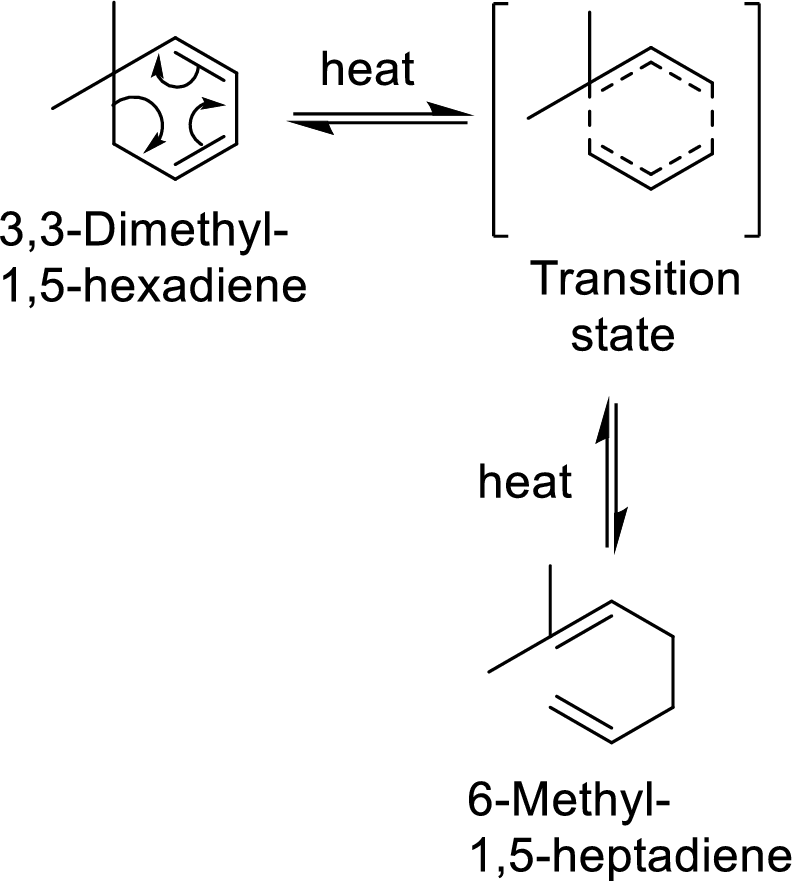
In this mechanism, two pi-bonds and one sigma bond of the reactant molecule has been rearranged and formed two new pi-bonds through a cyclic transition state.
Identification of cope-rearrangement in a
In the cope-rearrangement, the flow of electrons takes place between six bonds that are bonded as
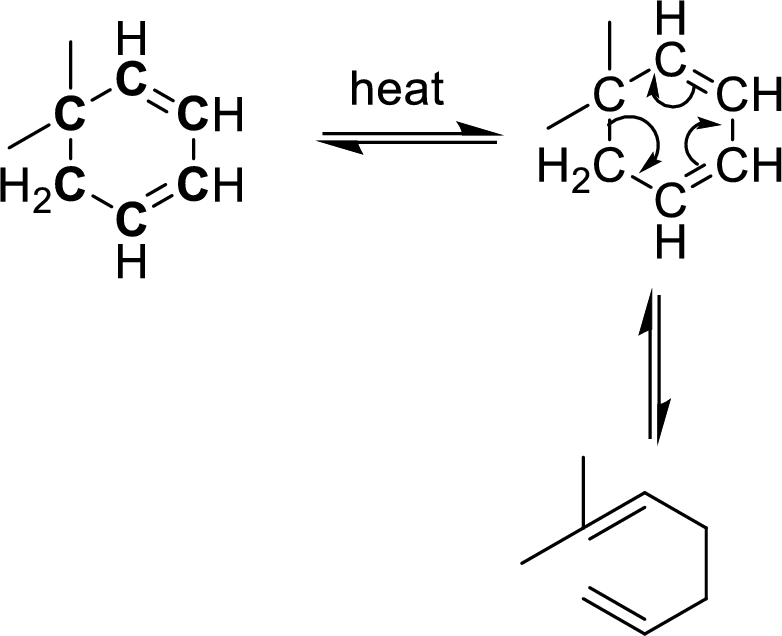
The carbon atoms that are involving in the cope-rearrangement are shown in bold.
(b)
Interpretation: The product formation in the given example of Cope rearrangement of
Concept Introduction:
Cope-rearrangement:
It is a pericyclic reaction that involves the redistribution of six electrons through the formation of a cyclic transition state from which a
Example with mechanism of cope-arrangement:
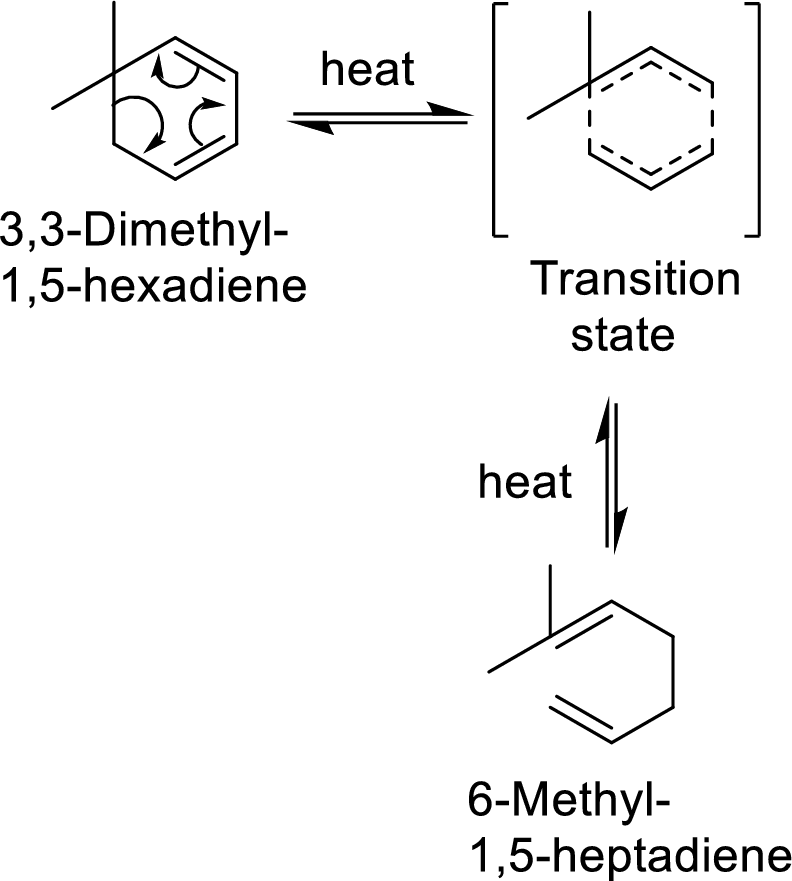
In this mechanism, two pi-bonds and one sigma bond of the reactant molecule has been rearranged and formed two new pi-bonds through a cyclic transition state.
Identification of cope-rearrangement in a
In the cope-rearrangement, the flow of electrons takes place between six bonds that are bonded as

The carbon atoms that are involving in the cope-rearrangement are shown in bold.
(c)
Interpretation: The product formation in the given example of Cope rearrangement of
Concept Introduction:
Cope-rearrangement:
It is a pericyclic reaction that involves the redistribution of six electrons through the formation of a cyclic transition state from which a
Example with mechanism of cope-arrangement:
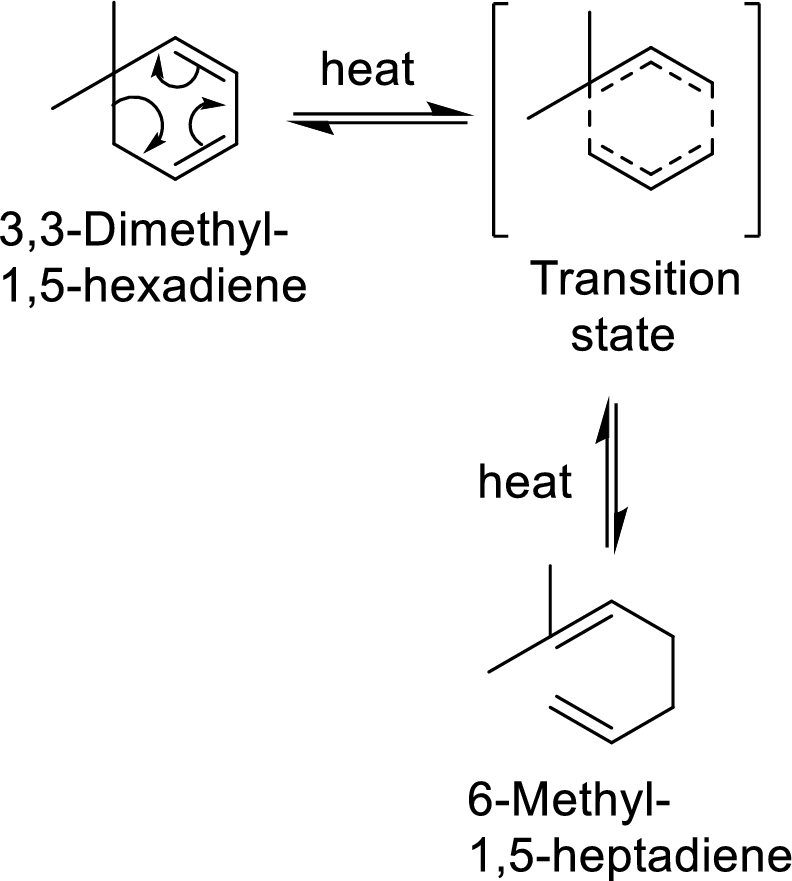
In this mechanism, two pi-bonds and one sigma bond of the reactant molecule has been rearranged and formed two new pi-bonds through a cyclic transition state.
Identification of cope-rearrangement in a
In the cope-rearrangement, the flow of electrons takes place between six bonds that are bonded as
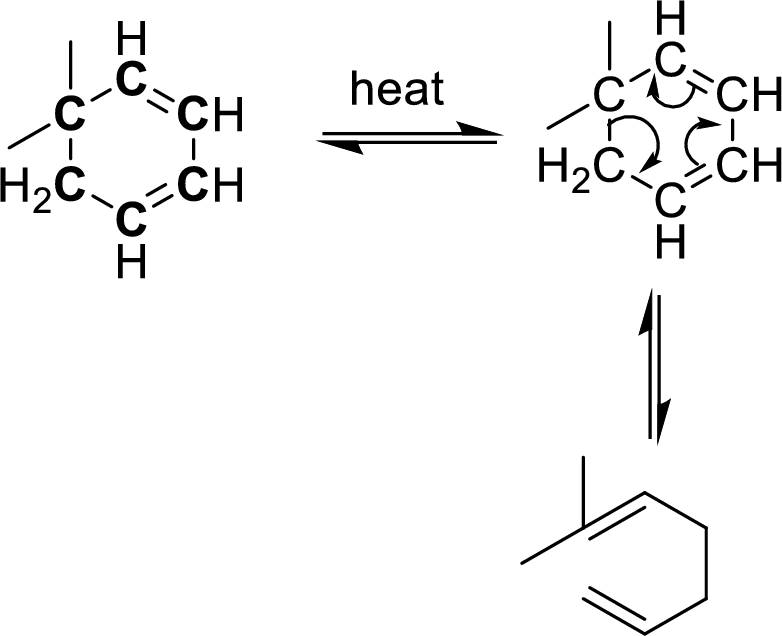
The carbon atoms that are involving in the cope-rearrangement are shown in bold.
Want to see the full answer?
Check out a sample textbook solution
Chapter 20 Solutions
EP ORGANIC CHEMISTRY-OWL V2 ACCESS
- Bicyclo-2,5-heptadiene can be prepared in two steps from cyclopentadiene and vinyl chloride. Provide a mechanism for each step.arrow_forwardAll rearrangements we have discussed so far have involved generation of an electron-deficient carbon followed by a 1,2-shift of an atom or a group of atoms from an adjacent atom to the electron-deficient carbon. Rearrangements by a 1,2-shift can also occur following the generation of an electron-deficient oxygen. Propose a mechanism for the acid-catalyzed rearrangement of cumene hydroperoxide to phenol and acetone.arrow_forwardWhen 1 mole of buta-1,3-diene reacts with 1 mole of HBr, both 3-bromobut-1-ene and 1-bromobut-2-ene are formed. Propose a mechanism to account for this mixture of products.arrow_forward
- On standing, 1,3-cyclopentadiene is transformed into a new compound called dicyclopenta- diene, having the molecular formula C10H12. Draw the mechanism of the reaction that forms the product. Use dashed lines to indicate bond formation and curves arrows to show bond movement.arrow_forwardThe Wittig reaction can be used for the synthesis of conjugated dienes, as, for example, 1-phenyl-1,3-pentadiene. -CH=CHCH CHCH, 1-Phenyl-1,3-pentadiene Propose two sets of reagents that might be combined in a Wittig reaction to give this conjugated diene.arrow_forwardElimination of HBr from 2-bromobutane affords a mixture of 1-butene and 2-butene. With sodium ethoxide as base, 2-butene constitutes 81% of the alkene products, but with potassium tert-butoxide, 2-butene constitutes only 67% of the alkene products. Offer an explanation for this difference.arrow_forward
- Chlorination of 1,3,5‑trimethylcyclohexane via radical halogenation leads to the formation of several monohalogenated products. Identify the products, then estimate the relative percentages of each product. Step 1: A monochlorination reaction will substitute a proton for a chlorine. Start by identifying all the unique positions that can be halogenated. Ignore stereochemistry. Replace each unique proton with a chlorine.arrow_forwardWhen 3,3-dimethyl-1-butene is treated with HBr alone, the major product is 2-bromo-2,3-dimethylbutane. When the same alkene is treated with HBr and peroxide, the sole product is 1-bromo-3,3-dimethylbutane. Explain these results by referring to the mechanisms.arrow_forwardThe reaction of methylpropene with HBr, under radical conditions, gives two intermediates. Propose a mechanism for the formation of the two products. Propose a mechanism for the following reaction and use electronic factors to account for the formation of a major product: CH2 CH2Br N-Bromosuccinimide (NBS) ho, CCI4 Draw the structure of an antioxidant, Vitamin E free radical and use resonance structures o account for its stability.arrow_forward
- Draw the mechanism of the hydroboration reaction for 1-octene. Why are carbocation rearrangements not observed in this reaction?arrow_forwardDetermine all of the products obtained from the addition of HCl to the 1,3-diene. Once determined, draw a mechanism that accounts for the formation of every product. Then, Identify and account for the formation of the major adduct/or adducts under these conditions assuming that the reaction is conducted under thermodynamic conditions.arrow_forwardWrite a mechanism that accounts for the formation of ethyl isopropyl ether as one of the products in the following reaction. CI OEt HCI EtOH Write the mechanism for step one of this reaction. Show lone pairs and formal charges. Only the acidic hydrogen should be drawn out with a covalent bond. Write the mechanism for step two of this reaction (where the product of step one reacts with the solvent, ethanol). Show lone pairs and formal charges. Only the acidic hydrogen should be drawn out with a covalent bond. Write the mechanism for the last step of this reaction (formation of ethyl isopropyl ether). Show lone pairs and formal charges. Only the acidic hydrogen should be drawn out with a covalent bond. CI will act as the base in this reaction.arrow_forward

 Organic ChemistryChemistryISBN:9781305580350Author:William H. Brown, Brent L. Iverson, Eric Anslyn, Christopher S. FootePublisher:Cengage Learning
Organic ChemistryChemistryISBN:9781305580350Author:William H. Brown, Brent L. Iverson, Eric Anslyn, Christopher S. FootePublisher:Cengage Learning

